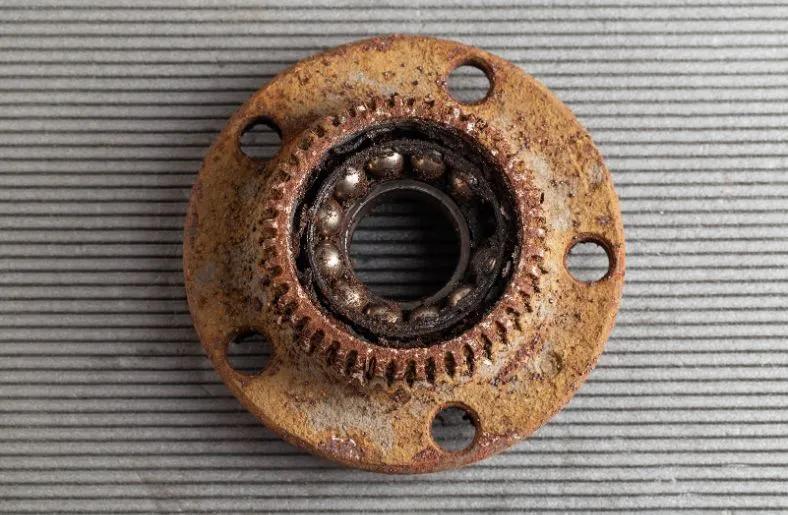If you own a trailer, RV, or any equipment that uses Vortex hubs, proper maintenance is essential to keep things running smoothly. One critical aspect of maintenance is greasing the Vortex hubs. These hubs are designed to provide reliable, long-lasting performance, but without proper lubrication, they can suffer from premature wear and even failure.
In this comprehensive guide, we will walk you through the step-by-step process of how to grease Vortex hubs, ensuring that your equipment remains in top-notch condition.
Table of Contents
What Are Vortex Hubs?
Before we dive into the process of how to grease Vortex hubs, let’s understand what Vortex hubs are and why they are crucial for your equipment. Vortex hubs are a type of wheel hub assembly designed for trailers and similar applications. They are known for their durability and ability to withstand heavy loads and adverse conditions.
Vortex hubs are sealed units that contain bearings and other critical components. The primary purpose of greasing these hubs is to provide lubrication to these moving parts, reducing friction and heat generation, and preventing premature wear.
Tools and Materials You’ll Need
Before you begin following the guide on how to grease Vortex hubs, make sure you have the following tools and materials ready:
- Grease Gun: A high-quality grease gun is essential for injecting grease into the hubs.
- Grease: Choose a high-quality wheel bearing grease recommended by the manufacturer of your hubs. It’s crucial to use the right type of grease to ensure proper lubrication and compatibility with the hub’s seals.
- Disposable Gloves: Grease can be messy, so wearing disposable gloves is a good idea to keep your hands clean.
- Jack and Jack Stands: You’ll need to lift your trailer or equipment off the ground to access the hubs safely. Make sure to use jack stands for added safety.
- Wheel Chocks: Prevent the trailer or equipment from rolling by using wheel chocks on the opposite side of the vehicle you’re lifting.
- Wrenches: You may need wrenches to remove the hub’s dust cap and castle nut, depending on your hub design.
- Clean Rags or Paper Towels: Have some clean rags or paper towels on hand for wiping off excess grease and cleaning parts.
- New Cotter Pin (if necessary): Depending on your hub’s design, you may need a new cotter pin to secure the castle nut.
How to Grease Vortex Hubs (A Step-by-Step Guide)
Follow these steps to grease your Vortex hubs properly:
Step 1: Safety First
Ensure that your trailer or equipment is on a level surface and that the parking brake is engaged. Use wheel chocks on the opposite side of the vehicle you’ll be lifting to prevent rolling. Safety should always be the top priority.
Step 2: Lift the Vehicle
Using a jack, carefully lift the wheel off the ground. Once the wheel is off the ground, secure it with a jack stand for added safety. Repeat this process for all the wheels you intend to grease.
Step 3: Locate the Hub
Locate the Vortex hub on the wheel. The hub is usually covered by a dust cap or hub cap. Remove the cap using a flat-head screwdriver or a suitable tool. Be gentle to avoid damaging the cap, as you’ll need to re-install it later.
Step 4: Examine the Hub
Before proceeding, inspect the hub for any signs of damage or wear, such as cracks, scoring, or excessive play in the wheel. If you notice any issues, they should be addressed before greasing the hub.
Step 5: Access the Bearings
Depending on your hub design, you may need to remove a retaining nut or castle nut to access the bearings. Use the appropriate wrenches to remove these components carefully. If your hub has a cotter pin securing the castle nut, replace it with a new one when you reassemble the hub.
Step 6: Clean the Bearings
Once you have access to the bearings, carefully remove them from the hub. Use clean rags or paper towels to wipe off any old grease and debris from the bearings. Inspect the bearings for signs of wear or damage. If they show any significant wear, it’s advisable to replace them.
Step 7: Apply Grease
Load your grease gun with the recommended wheel-bearing grease. Attach the grease gun to the grease fitting on the hub. Slowly pump the grease into the hub while rotating the wheel. Continue adding grease until you see fresh grease squeezing out around the bearings.
Step 8: Reassemble the Hub
Carefully place the cleaned or new bearings back into the hub. Reattach any retaining nuts or castle nuts and secure them to the manufacturer’s specifications. Make sure to use a new cotter pin if required.
Step 9: Replace the Dust Cap
Clean the inside of the dust cap and the hub surface it contacts. Gently tap the dust cap back into place using a rubber mallet or a block of wood. Ensure it is fully seated and secure.
Step 10: Repeat for Other Hubs
If you have multiple hubs on your trailer or equipment, repeat the greasing process for each one.
Step 11: Lower the Vehicle
Carefully remove the jack stands and lower the vehicle back to the ground using the jack.
Step 12: Test the Wheels
After greasing all the hubs and lowering the vehicle, rotate each wheel by hand to ensure that they turn freely and smoothly. This confirms that the bearings are properly lubricated.
Maintenance Schedule
Regular maintenance of your Vortex hubs is essential to keep them in optimal condition. Here’s a recommended maintenance schedule:
- Every 12 Months or 12,000 Miles: Grease the hubs annually or after every 12,000 miles of use, whichever comes first.
- After Submerging in Water: If your trailer or equipment has been submerged in water, it’s crucial to inspect and regrease the hubs immediately.
- Visual Inspection: Regularly inspect the hubs for any signs of wear, damage, or leaking grease. Address any issues promptly.
Related Guide: Demystifying Shredder Oil: What is Shredder Oil Made Of (2023-2024)
FAQs
1. How do I know if my trailer bearings need grease?
Check the grease level by pressing on the edge of the spring-loaded piston. If you can move or rock the piston, the hub has enough grease. Don’t add any more. If the piston doesn’t move, you need to add more grease.
2. How often should you grease trailer hubs?
Most trailers need greasing every 10,000 to 12,000 miles. A single-axle utility trailer may need less frequent greasing than a large K-trailer. On the other hand, boat trailers with small wheels may need more regular greasing. In some cases, they may need greasing every 2,000 miles.
Conclusion
Properly greasing Vortex hubs is a vital aspect of trailer and equipment maintenance. By following this comprehensive guide on how to grease Vortex hubs and adhering to a regular maintenance schedule, you can ensure that your hubs operate smoothly, last longer, and provide reliable performance for years to come.
Remember that safety should always be your top priority, so take your time and be thorough when greasing your Vortex hubs. Your equipment and peace of mind will thank you for it.

